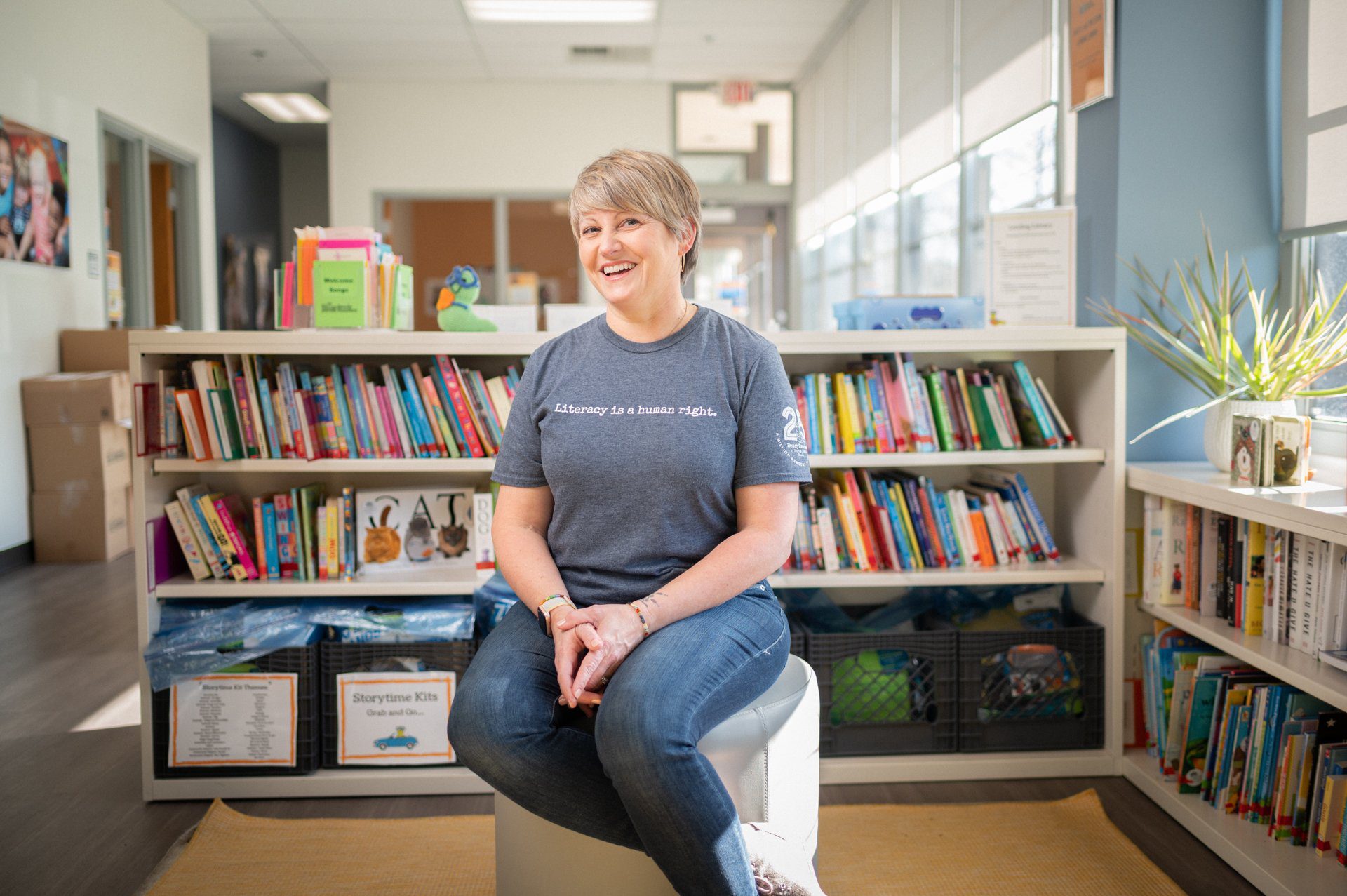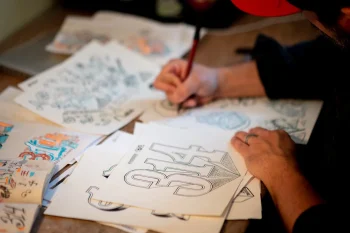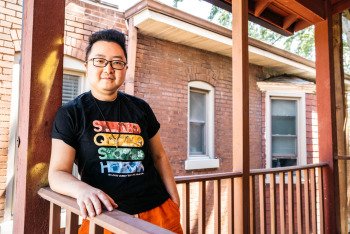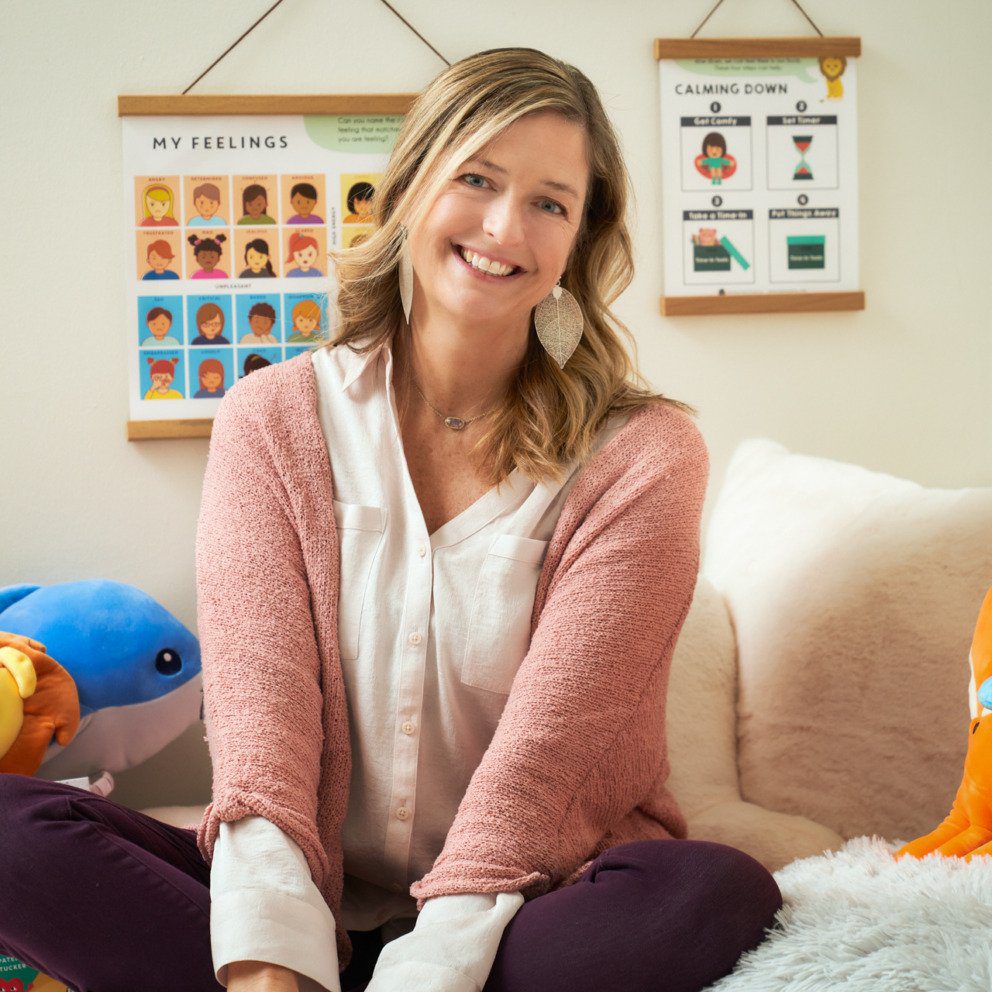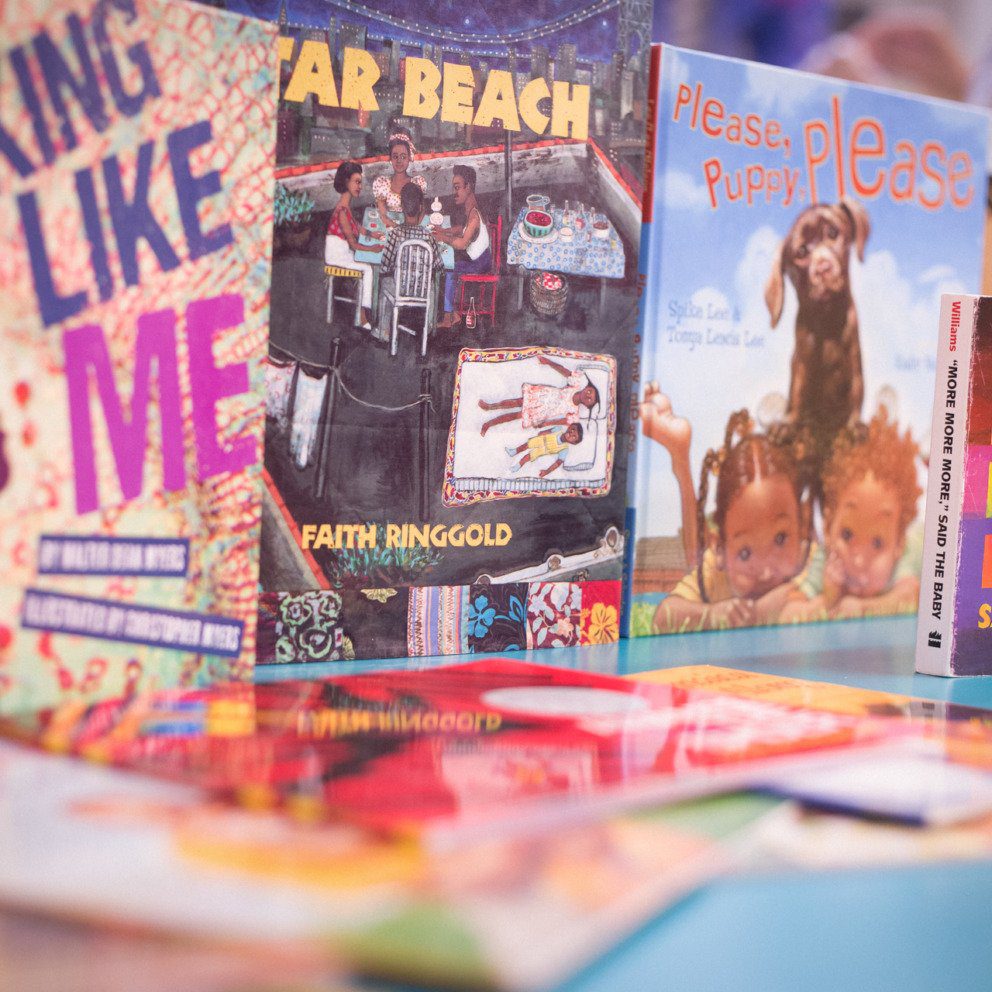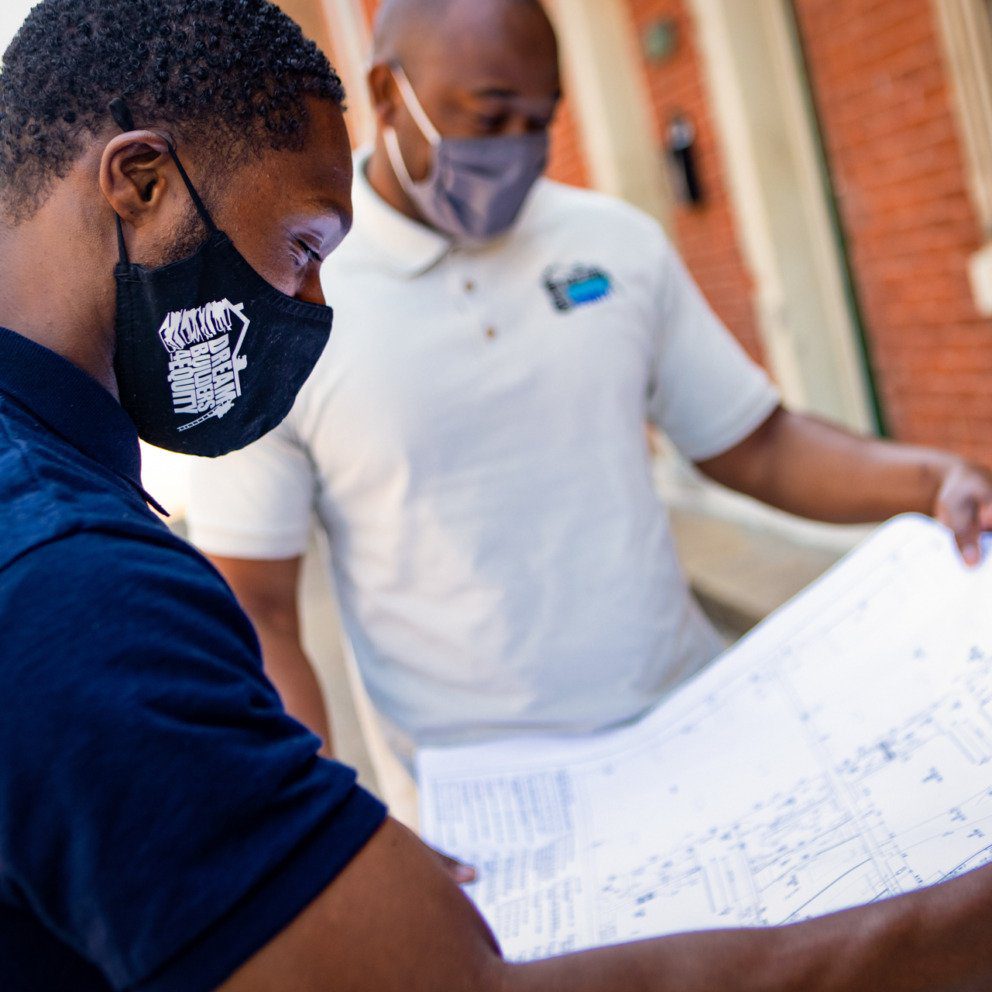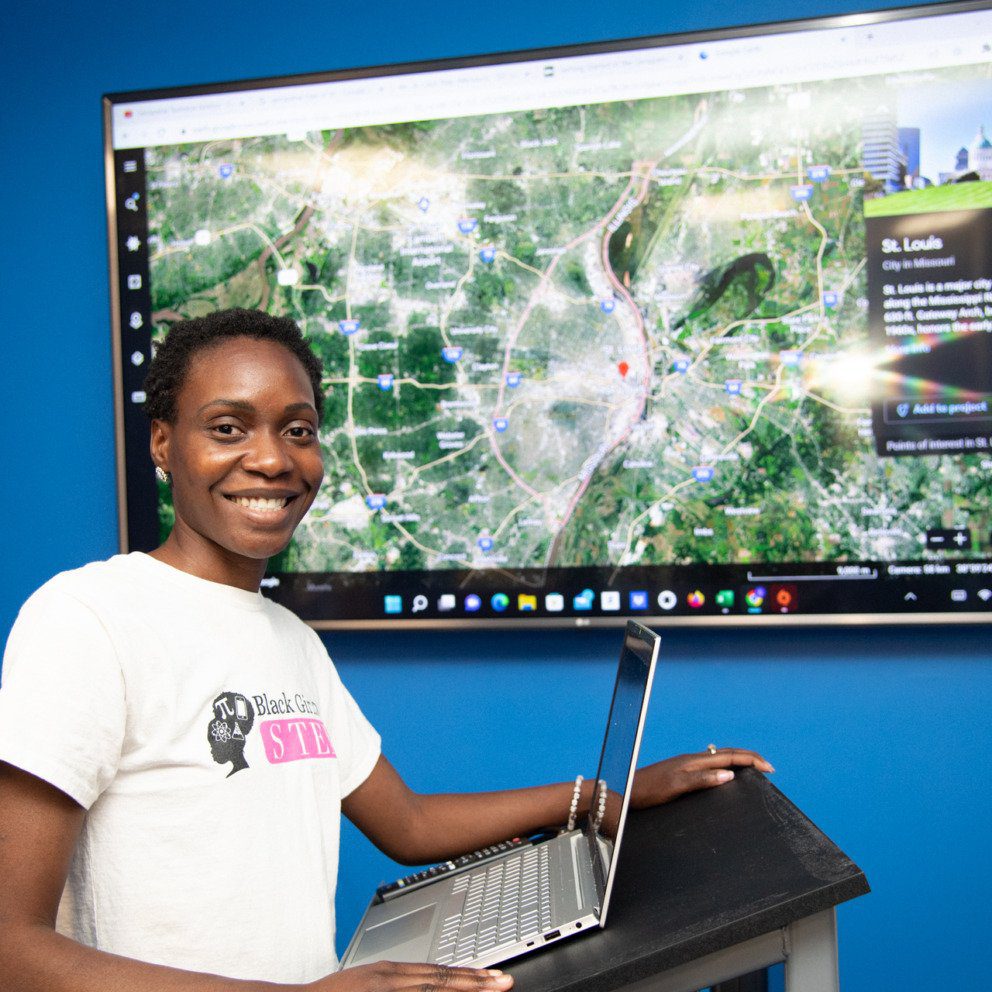A Reading
Revolution
For more than 25 years, Ready Readers has helped advance social and racial equity in St. Louis by bolstering literacy education for preschoolers in low-income communities.
Ready Readers program director Maggie Strube finds it difficult to narrow down her favorite book titles for three-, four- and five-year-olds and starts sampling rhyme as she tries to explain the plot of Grandma’s Tiny House.
“It is my absolute favorite read-at-home book we’ve ever distributed,” she says. “It’s a counting book, but it’s also a book about family, with a sort of friend-family enjoying a potluck meal together. You know, everyone is coming over, and ‘four aunties are bringing pies, and five uncles give high fives’ and all that fun stuff.”
Fun is integral to the nonprofit’s approach to literacy equity, as is the cultivation of lasting, trusting relationships between the adult readers and preschool-age children who form its extensive story time program, serving more than 10,000 students across St. Louis. And yet, the mission of the organization is rooted in a serious, high-stakes set of facts:
“Children who read at grade level by the time they leave third grade have better graduation rates from high school, land better-paying jobs, are less likely to be involved with the criminal justice system and even have better health outcomes,” says Angela Sears Spittal, executive director of the organization.
To set children up for success in third grade — a turning point in their education, Sears Spittal explains, where they transition from learning how to read to reading to learn — Ready Readers works to equip children from low-income, under-resourced communities with the literacy skills they need several years earlier, when they enter kindergarten. Throughout this process, the organization also empowers teachers, parents and caregivers in the early childhood realm with strategies for integrating literacy into their kids’ daily activities.
For the story time program, trained volunteers visit the same classroom for one year, where they lead weekly 30-minute interactive read-aloud sessions. For classes that don’t yet have an assigned volunteer reader, Ready Readers now also offers virtual story time meetings several times per week.
Ready Readers also gives books to children, and for some, those books are the first ones that they own. Seven to eight times a year, volunteers distribute copies of books to their classes to enjoy with their families at home; Last spring, Ready Readers celebrated the donation of its one millionth book in tandem with its 25th anniversary. But the biggest pride point can’t be measured in numbers.
“One of the things at Ready Readers that I am most proud of is the quality of books we are able to provide our kiddos,” says Strube. In choosing the most engaging content possible, she and other staff apply the research on literature as “mirrors, windows and doors,” according to Spittal. This is the idea that readers need to see themselves in books (mirrors) but also empathize with characters different from themselves and envision worlds beyond their own experience (windows and doors). Toward this end, Ready Readers has partnered with St. Louis Black Authors of Children’s Literature to promote titles that depict the experiences of Black children and those from other historically underrepresented groups in vibrant, authentic ways.
While quality books are essential, the dedication of volunteers keeps the organization going. “Ready Readers is powered by volunteers,” Sears Spittal says. “We reach more than 13,000 children every week with story time, and that would be impossible without the commitment of our volunteer readers.” She calculates that roughly 220 volunteers serve the story time program, in addition to 100-150 individuals who help pack and organize books in the warehouse.
With the resurgence of in-person programming several years into the pandemic, Ready Readers is looking to rebuild its volunteer ranks. No experience with early childhood education is necessary, Sears Spittal emphasizes, noting that new recruits receive thorough and practical training on every aspect of story time, from how to establish a consistent greeting to strategies for maximizing student engagement.
Strube, who leads her own weekly story time session, laughingly recalls how she realized she was doing something right as a reader and facilitator. “I came in to read one week, and a teacher pulled me aside and said, ‘Maggie, I want you to know that the kids play Ready Readers during their free time. One of them sits in the grown-up chair, and they read books to the other kids on the rug. Then they all take turns being the reader.’”
In addition to bringing books alive in the classroom, Ready Readers also creates memorable experiences around literature by organizing special field trips. Destinations include Powell Symphony Hall, where members of the St. Louis Symphony Orchestra allow children to explore various instruments and then do a performance based on music-focused books such as “Giraffes Can’t Dance” and “The Lion and the Mouse.” At the Humane Society of Missouri, children read books like “Best Day Ever!,” “Milo and Monty” and “I Got a New Friend,” then learn about pet care and read to the animals in their crates.
“We work to pair an experience with a book because children learn through play. Anytime we can create literacy-themed experiences for a child, that’s a powerful thing,” Sears Spittal says.
Sears Spittal and her team also promote literacy through collaborations with educational and social advocacy organizations across the city. Some of these collaborations are simple, such as donating books to local churches to help bolster their back-to-school drives. Others are more involved, such as Ready Readers’ current partnership with Midtown Community Services, for which staff provide books and literacy education materials to new parents every month alongside diapers and other childcare supplies. In addition, they lead short information sessions for the parents on how to foster literacy skills at home.
In addition to these informal trainings for new moms, Ready Readers offers state-approved, for-credit professional development workshops to all early childhood educators who participate in the story time program. Such workshops cover a wide range of content, from STEAM (science, technology, engineering, art and math) to trauma-informed instruction (e.g., “Using Children’s Literature to Address Trauma, Develop Emotional Literacy and Teach Self-Calming Techniques”).
Teaching social emotional skills like stress management and self-soothing is in fact a major part of Ready Readers’ impact on children and teachers across St. Louis. “So much of what we’re doing is teaching children how to identify and name their emotions, as well as how to control their emotions with mindfulness activities,” says Spittal. For example, volunteer readers often help children meet the challenge of sitting still and paying attention by leading them through “five-finger breathing,” where they trace the outline of their hand while breathing in and out. “These activities are really empowering for young children,” says Sears Spittal.
Data from educator surveys show that these and other strategies are having a powerful impact on learning. Teachers whose classes participated in story time with an in-person reader during the 2021-22 school year estimated that 79% of their students achieved at least one reading-related milestone, such as identifying their written first name, by the end of the school year. Adult participants, too, reported gains: 76% of story time teachers said they learned new or enhanced ways of promoting literacy, while 79% said they learned new tools for supporting children’s social and emotional development.
This far-reaching impact all started with one woman’s desire 25 years ago to improve society by reading aloud to children. “I love the story of Ready Readers,” Sears Spittal says. “Founder Pat Simon was an attorney who got some friends together, and they went to garage sales and found books. They talked a childcare center into letting them come in to do a story time and give away books once a week, and that’s how it started.” Today, Simon serves on Ready Readers’ advisory committee.
Ready Readers is one of several organizations in St. Louis forming a movement to address inequity by building literacy. The Noble Neighbor, the nonprofit arm of Webster Groves bookstore The Novel Neighbor, and The Literacy Project, an initiative of the Gathering church, are two others helping with this goal.
Sears Spittal encourages individuals who may be considering how they can make a difference in their communities to pick up Simon’s mantle and embrace the simplicity of story time as social change: “If you know you want to do something to support our region, to support our community, and you think, what can I do? Ready Readers is your answer.”
Join the Story
- Support Ready Readers on February 1 for World Read Aloud Day. All donations will be matched times four, and there will be a story time on the hour for 24 hours.
- Sign up to volunteer with Ready Readers.
- Check out other STLMade stories of organizations working toward equity in St. Louis: Dream Builders 4 Equity, Art Place Initiative and Propel Kitchens.
